Current Research Projects


Broadband and mobile communications are now evolving towards the sixth generation (6G). Data rates in mobile communication networks are increasing dramatically by excessive usage of data traffic and, thus, driving the tendency for use of higher frequencies as 26 GHz, 28 GHz, and 39 GHz bands for wireless communication. Millimeter-wave (mm-Wave) communication is one of the keys enabling technologies in 5G networks.The proposed design shows an innovative approach to use mm-Wave and 5 GHz Wi-Fi in a single structure using a single-layer board. The impact of crossover on 5 GHz and 26 GHz band is not significant The CPW interface at the crossover junction provides a better ground for the transmission line as the bottom layer includes a partial ground There is flexibility to use this for larger arrays for 26 GHz to meet the gain requirements. This design can be used as an access point for fixed wireless communication for the 5 GHz Wi-Fi band and 26 GHz mm-Wave frequency band.
This research is funded by SFI Centre for Research Training in Advanced Networks for Sustainable Societies (ADVANCE CRT) and headed by PhD student Neeraj Kumar Maurya under the supervision of Prof. Max J. Ammann and Dr. Patrick McEvoy.
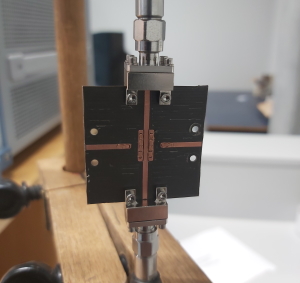
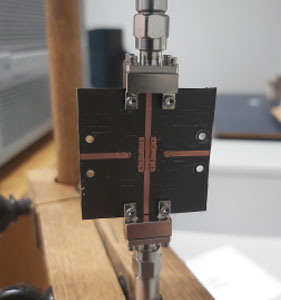
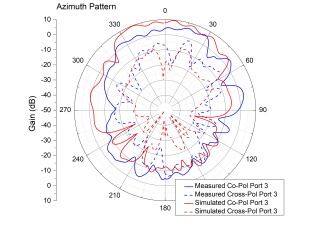
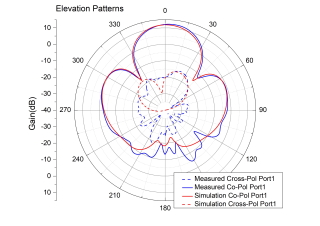


Internet of Things (IoT) is a fast-growing technology with variety of applications and with the rapid growth of digitization, the boundaries between digital and physical worlds are disappearing. The faster the digitization grows, the more we utilize digital tools to interact with our environment. With the enormous number of connected objects, the need for powering them is an issue.
Ambient backscatter communication is a novel communication mechanism that can be a promising solution to address some of the IoT challenges. With the emerge of ambient backscatter communications the interest in ambient RF energy harvesting has been intensified.
The aim of this project is to introduce a wideband CP antenna that covers a wide range of omnipresent RF bands, while its size is small enough to make it a valuable candidate for embedding in battery-less devices in IoT networks.
To this end, in [1] A compact broadband CP antenna was proposed for harvesting ambient RF signals.
In another configuration, in [2], the antenna was matched from 1.45 GHz to 3.38 GHz with 990 MHz CP bandwidth. Achieved wide CP bandwidth enables the proposed antenna to harvest energy from several omnipresent wireless bands such as GSM 1800/1900, 3G/4G/LTE 2100/2300/2500, and 2.45 GHz Wi-Fi. In addition, the overall size of 50×60×1.6 mm with a total-efficiency better than 91.4% over its CP bandwidth makes the antenna a potential candidate in powering small-sized IoT devices in practical ambient backscatter communications.
This research is funded by SFI Centre for Research Training in Advanced Networks for Sustainable Societies (ADVANCE CRT) and headed by PhD student Khatereh Nadali under the supervision of Prof. Max J. Ammann and Dr. Patrick McEvoy.
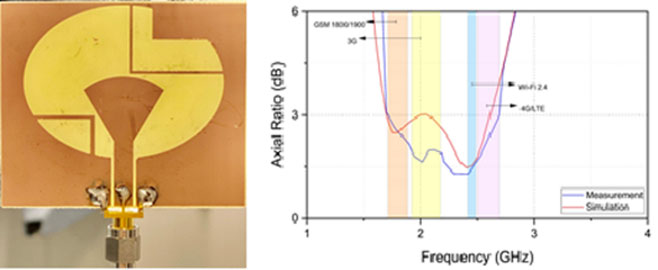
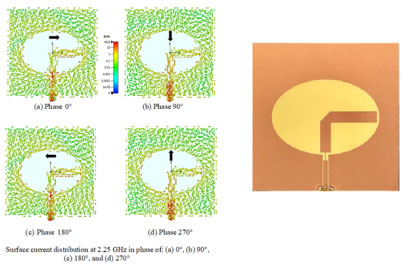


This work looks at a design of a wideband array for Broadband Global Area Network (BGAN) portable terminals. BGAN terminals are used to connect to the internet from remote locations via the I-4 geostationary satellite constellation designed and operated by INMARSAT. The proposed antenna employs a 2x2 array of air-spaced annular-ring loaded circularly polarized circular patches. The elements are sequentially rotated to increase the antenna bandwidth. The antenna was fabricated and tested in the AHFR laboratory, and the measured 3dB axial ratio bandwidth is greater than 70% and the 10 dB impedance bandwidth better than 46.5%. The peak gain better than 13 dBic.
This research is funded by SFI Centre for Research Training in Advanced Networks for Sustainable Societies (ADVANCE CRT) and headed by PhD student Jakub Przepiorowski under the supervision of Prof. Max J. Ammann and Dr. Patrick McEvoy.
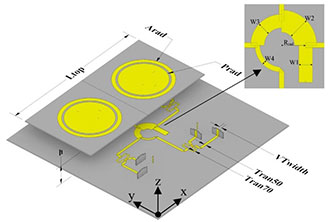
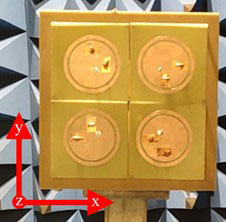


A method to analyse and visualise near-field energy around antennas was proposed [1]. It uses a combination of electromagnetic simulation and advanced signal processing. The visualisations show what is going on inside an antenna in space-, time- and frequency-domain and give new and deeper insights into how energy moves within an antenna structure.
This new method can inform the design of wide-band antennas to achieve optimisation for efficiency, gain performance and signal transmission integrity. It will change how antennas are designed and optimised, in particular, for the emerging mmWave travelling-wave antennas and wide beam electrically steerable arrays
Impact:
This work was awarded a best paper award at the IEEE International Workshop on Antenna Technology in Bucharest in February 2020 [2] and subsequently published in the IEEE Antennas and Propagation Magazine [3] which is recognised as a top-ranked peer-reviewed journal in the Antennas and Propagation field.




The aim of this work is to design leaky-wave antennas for millimeter-wave frequency scanning applications and mitigate the open-stopband effect at broadside without any complex designs or circuitry. In one meandered wire to planar transformation, the horizontal and vertical lengths of the unit-cell of Klopfenstein tapered Dual Bruce array structure were optimised which enabled two scanning ranges in wideband operation having seamless scanning from backward endfire to forward endfire direction in the first scanning range [1]. In another configuration, the horizontal and vertical lengths of the unit-cell were replaced with semi-circular and bowtie elements, respectively, to achieve wide seamless scanning from -64° to 76° with Sidelobe level less than -10 dB [2].
This research is funded from the CONNECT Centre under Science Foundation Ireland (SFI) and headed by PhD student Zeeshan Ahmed under supervision of Prof Max Ammann and Dr Patrick McEvoy.
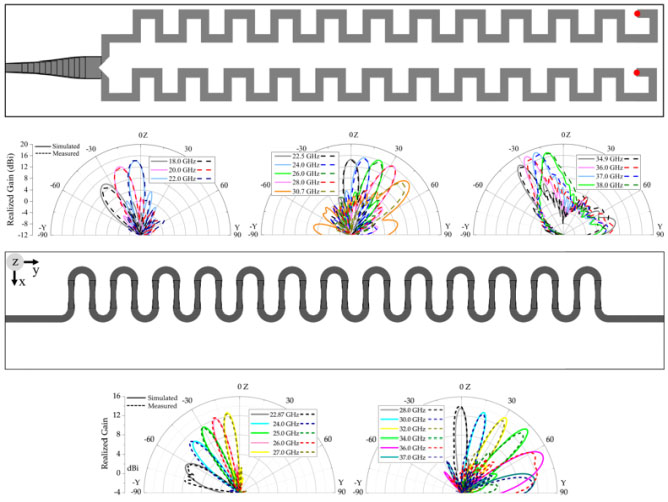
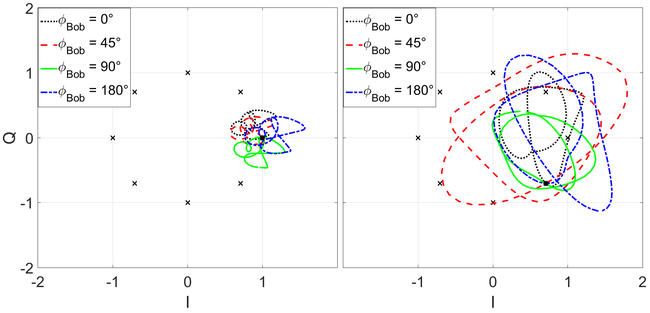
The emerging implementation of “Smart Cities” and “Internet of Things” (IoT) will see a multitude of sensors and daily-use objects connected wirelessly to the Internet, resulting in huge quantities of highly-sensitive personal and critical data transmitted in a genuinely open wireless medium. Even partial interception of data could have devastating consequences for individuals and societies, thus necessitating secure and private communication on an unprecedented scale. Unfortunately, most IoT devices will rely on small, low-cost and battery-operated platforms, with very limited computational power. Such simplistic hardware allows very limited support for state-of-the-art cryptography, which requires computationally expensive operations.
A potential solution is physical-layer security, which uses the physical properties of electromagnetic wave propagation to ensure safe and private communication. Wireless-SPIne project aims to develop a system for safe wireless communication which uses simplistic hardware and compact antennas. It will be based on directional modulation technique, where the antenna and propagation channel are used to disrupt modulation constellation (seen in figure above). This is a multidisciplinary effort, combining antenna engineering, radio channel propagation, modulation techniques and cryptography. It is led by Dr. Adam Narbudowicz, with mentorship of Prof Max Ammann and in collaboration with Prof Nicola Marchetti from Trinity College Dublin. It was funded under the EDGE Fellowships programme.
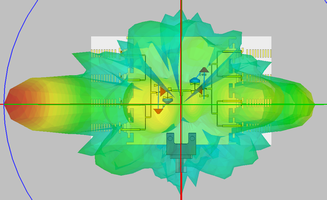
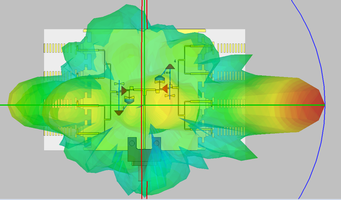
This work aims to realise the next generation of reconfigurable antenna with switching circuity. The research focuses on the feasibility study of attaching the switching circuity for pattern reconfigurable antenna design. The design purposes are maximizing the pattern diversity and minimizing the loss of adding the switching circuit to realizing novel mm-Wave antenna design.
With funding from the CONNECT Centre under Science Foundation Ireland (SFI), The research is headed by PhD Student Kansheng Yang under supervision of Prof Max Ammann, Dr Xiulong Bao and Dr Patrick McEvoy.
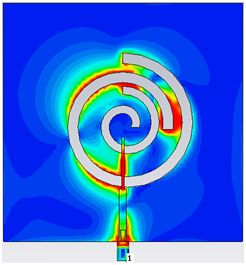
Balancing the antenna performance across competing parameters is a key enabler for microwave communications as it evolves from established social telephony uses to linking advanced wireless networks. Circularly polarized radio propagation links in satellite communications, satellite positioning and radio frequency identification (RFID) systems are preferred to linear schemes which are subject to losses when arbitrary polarization misalignment occurs between the transmitter and receiver. With CP antennas at both radios, the enhanced gain and cross-polar discrimination improve the systems' resilience to multipath propagating effects. While antenna miniaturization is desirable for small and portable devices, radio links are dependent on a balance of antenna bandwidth, efficiency or polarisation quality which are inherently compromised by size reduction. The challenges are particularly acute in adverse environments due to congestion and variable propagation conditions.
In recent decades, several techniques have been used in various types of circularly polarized antennas to create broader operating bandwidths but with the sacrifice of the antenna profile being greater than a quarter-wavelength. Alternatively, lower profile slot antennas have achieved wideband CP characteristics, but equally, the antenna dimensions defy reduction to satisfy miniaturized device requirements and groundplane shapes and sizes are critical. The project involves antenna design which can support circular polarisation across unprecedentedly broad bandwidths which can lead to viable design solutions for integration with miniaturised radio systems of the future.
SFI Starting Investigator Dr Xiulong Bao is leading this project with PhD student Adam Narbudowicz, under the mentorship of Dr Max Ammann.
This project explores the integration of tapered feeds and metamaterial surfaces into dipole, horn and leaky wave antenna geometries in order to minimise their pulse-distortion, size and weight. Feed structures will be optimised to equalise the power carried by resonant modes in directive UWB antennas. The goal is to enhance UWB antennas for Ground Penetrating Radar and Biomedical Imaging Applications.
This work is driven by Dr Giuseppe Ruvio in collaboration with the Second University of Naples, Italy, where a prototype biomedical imaging system will be used to qualify system performance due to the various antenna designs created. Numerical models of the human body are used to analyse the antenna interaction with multi-layered human tissues. Optimised antennas will be a critical enabler for the realisation of cost effective sub-centimetre image resolution using a UWB impulse method. The research will quantify the merits of integrating three advanced electromagnetic design techniques into antennas with the objective of enhancing emerging applications. For example, through antenna size reduction, biomedical imaging systems will have improved access to otherwise restricted areas on the human body.
Past Research Projects
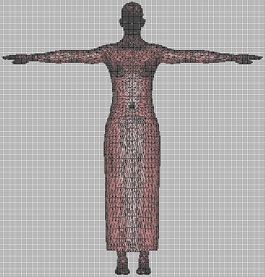
The research project is being led by Professor Max Ammann with Dr Patrick McEvoy and PhD student Domenico Gaetano. It focuses on antenna design for telemetry in body-centric sensor networks. The challenges include the selection of robust electromagnetic materials, antenna optimisation for compatibility with human physiology and the mitigation of adverse ground-level propagation effects. Radio-linked sensors, which will facilitate detailed real-time analysis, will also overcome the restricting influences of trailing wires on the natural gait and lower leg activity of users.
In collaboration with specialist physiotherapy researchers at the RCSI, the antenna team propose to use CST’s Microwave Studio, a Finite Difference Time Domain-based predictive modelling technique, to account for the electrical properties of the limbs, clothing and postural influences. Network analyser measurements will be used to validate prototype designs and experimental radio links will test the design suitability for typical on-body and off-body communications channel scenarios. The measurements analysis will be carried out in both anechoic and reflective environments in order to describe the antenna performances. The study will consider flexible, conducting materials for integration with various footwear types and new techniques for supporting reliable microwave connections with radio systems in fabrics.
The physiotherapists will investigate the influences of wireless devices on patient behaviour. The research will define the best approaches to miniaturising radio antennas for emerging networks that will monitor pressure, environmental conditions or tracking sensors. The research will bridge significant knowledge gaps to liberate growth in manufacturing sectors that are exploring opportunities with body area network devices. This research will tackle the challenges to antenna design which footwear sensors require for emerging medical, occupational and leisure applications. While miniaturised microchip radios are available, new antenna techniques are necessary to enable footwear connections with upper-body and off-body data analysis systems.
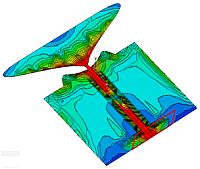
This project centres on antenna optimisation for signals that exploit time-domain characteristics in communications and ranging systems. Multi-jurisdictional ultra wideband standards (IEEE 802.15.4a) have been allocated frequency spectra for short range, low-powered applications that are sensitive to impulse distortion. Impulse Radio - Ultra Wideband (IR-UWB) use signals in the pico- to nano-second range. To preserve signal quality, it is essential that the antenna does (1) not add significant distortion to the transmitted or received signal and (2) the radiated energy pattern does not introduce significant variation to the signal time of arrival at different angles. In general, the miniaturisation of antennas compromises several of the radiating performances that reduce the communications range or data throughput performances. Fidelity metrics to quantify these effects used to optimise the miniaturisation of single-ended and balanced-feed antenna geometries for time-domain-based applications. PhD Student Antoine Dumoulin is carrying out this work with guidance from Dr Max Ammann, Dr Matthias John and Dr Patrick McEvoy.
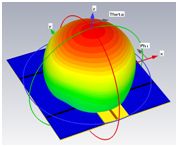
The integration of Photovoltaic (PV) cells with cellular antenna panels provides for autonomous solar powered communications networks. This research is focused on establishing a practically-oriented rigorous understanding of implications for antenna design theory, photovoltaic characteristics and non-imaging optics when combined for building façade locations. This project is funded by Science Foundation Ireland (SFI-RFP) and Dr Max Ammann is co-supervising the antenna research with Prof Brian Norton & Dr Sarah McCormack who are based in DIT's Dublin Energy Lab. Additional information can be found here.
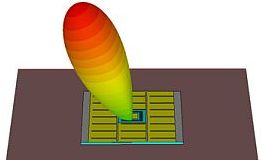
This work aims to realise the next generation of fully reconfigurable radio transceivers and associated intelligent antenna systems. With funding from Science Foundation Ireland (SFI), the Centre for Telecommunications Value-chain Research (CTVR) has based the antenna research in the DIT AHFR Centre. The research is headed by Dr Max Ammann, Dr Matthias John and Dr Shynu Nair and is partnered with Dell Ireland and Alcatel Lucent Research Ireland. This project is the longest running in the centre and has currently been renewed under the scope of CTVR2.
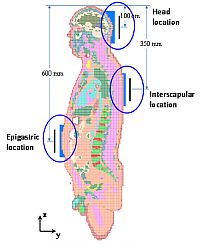
Adjuvant cancer therapies following surgery aims to minimise the recurrence of cancerous growth or spread. The use of electromagnetic fields to produce hyperthermia in tissue may compliment ionisation or chemotherapies by enhancing eradication of unwanted cancerous cells. The non invasive and efficient deployment of RF energy requires antennas that can operate in close proximity to human tissue without adding to the discomfort of the patient. This research is focused on numerical analysis of fundamental coupling modes and measured outcomes of various antenna designs. Sergio Curto is funded by the Irish Research Council for Science, Engineering and Technology and the AHFR group are also collaborating with the Institute for Infocomm Research (I²R), Singapore on this work.
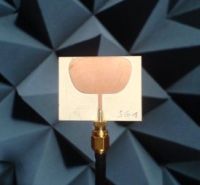
Ultra Wide Band (UWB) technology exploits spread spectrum methods to deliver high data rate connectivity over short distances. Accurate simulated modelling of UWB is complicated by antenna bandwidth operation greater than 110%. Members of the group are working on novel low-profile wideband designs. Complimentary modelling techniques such as MoM/UTD, FI and TLM are being used to compare analyses in order to find the most accurate predictions. The work also includes Frequency Independent Designs to achieve bandwidth performance. PhD students Jonathan Evans, Giuseppe Ruvio and Matthias John are driving this work and the group also enjoys collaboration with Prof Zhi Ning Chen, Institute for Infocomm Research (I²R), Singapore. Emerging applications will provide seamless interfacing between items such as TVs, DVD players, memory sticks, cameras, phones, etc. Restricted antenna dimensions and stringent performance criteria necessitate antenna designers to forge balanced engineering compromises within typical consumer technology budgets. The Enterprise Ireland funding backs the DIT's ambition to exploit the AHFR group’s expertise to develop prototype antennas that will provide best-in-class performance using low cost planar fabrication technology.
While radiowaves propagate under appropriate conditions in freespace, this work considers radiowave communication via optical fibres. The investigation is based on millimetre wave generation by stimulated Brillouin scattering. The work is being researched by PhD student Markus Junker along with Kai-Uwe Lauterbach and Ronny Henker who are studying the spectroscopy and modulation techniques, respectively. The project is in collaboration with Deutsche Telekom University of Applied Science Leipzig and is co-supervised by Prof Thomas Schneider and Dr Andreas Schwarzbacher.
Electrically small antennas are widely used in handheld radio equipment. The small dimensions afford compact structures and are often the results of empirical trials. Using an alternative optimisation technique based on the preferential selection processes of evolutionary algorithms, Matthias John is researching novel shapes to eliminate redundancies in order to provide wideband printed monopoles and feed systems. His work is supported by the >Centre for Telecommunications Value-Chain Research.
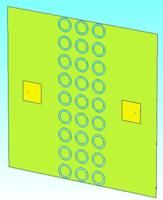
Renewed interest in periodic structures has enhanced methods to manipulate sub-wavelength electromagnetic energy within microwave antennas and circuitry. The AHFR group are exploiting fractal hi-impedance surfaces to improve circularly-polarised microstrip patch antenna performance criteria such as side-lobe suppression, front-to back ratios and decoupling. As part of the activity with the Centre for Telecommunications Value-Chain Research, Dr Xiulong Bao and Giuseppe Ruvio have successfully devised significant gain and axial-ratio bandwidth improvements.
